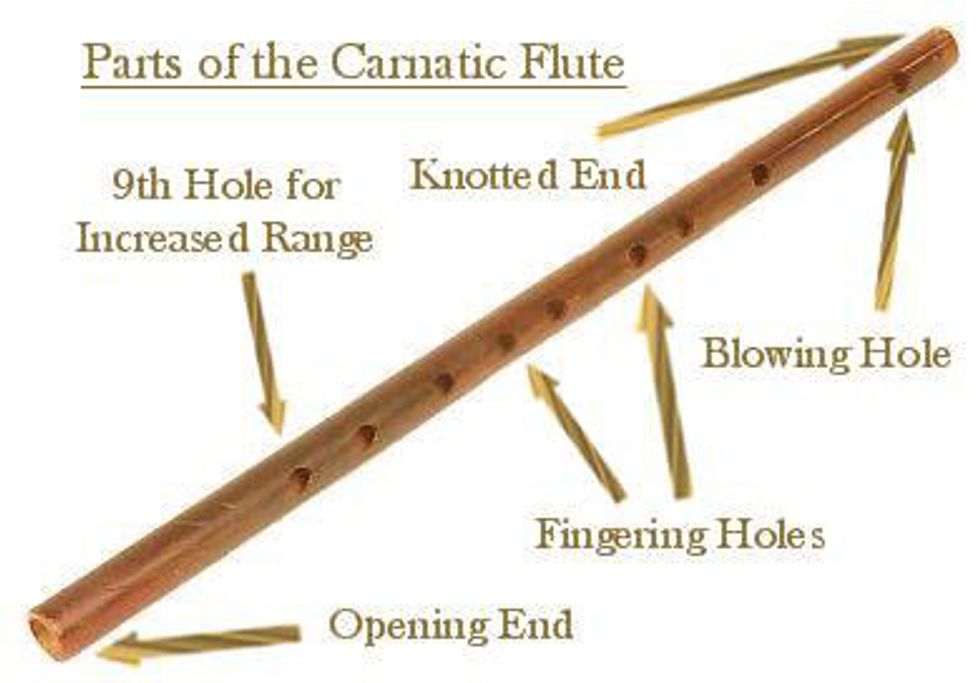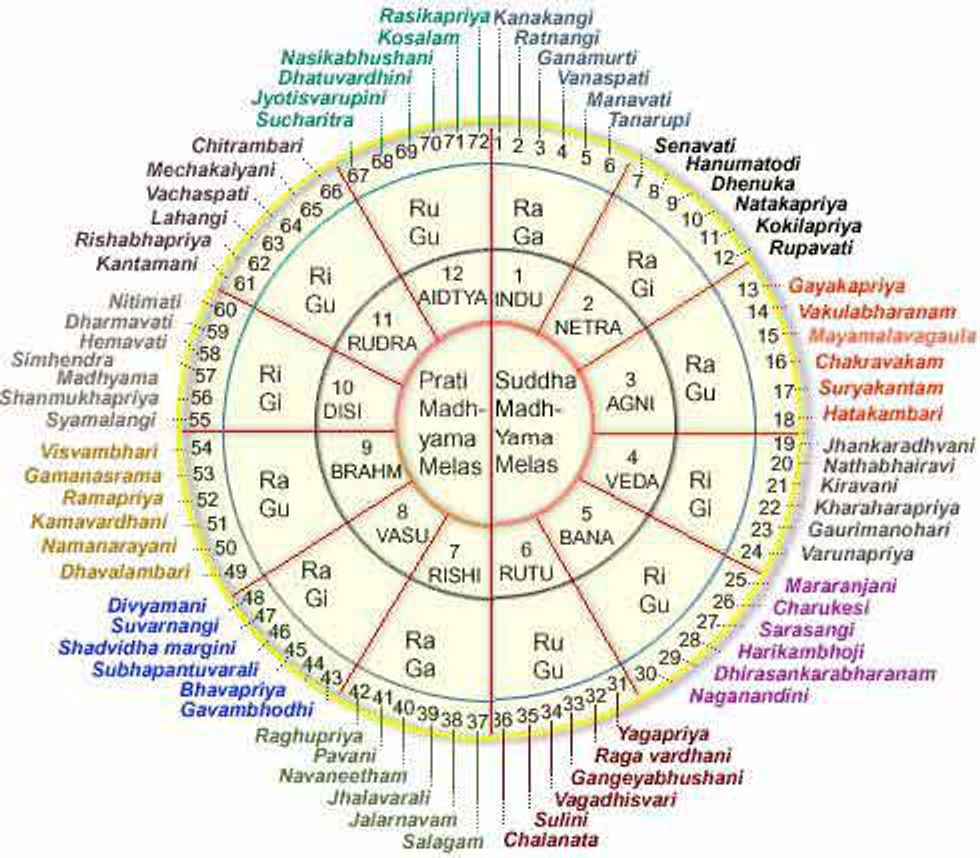Recently, there is a slow but noticeable growing trend in Western flute players and musicians from around the world wanting to learn the Carnatic flute of India (not to be confused with the Bansuri). I'll admit that I am one of them. The reason as to why? Well, for starters, the Carnatic flute is mainly used in South Indian Carnatic music and it has a unique sound to it with capabilities of reaching the fine nuances in music. The flute is also an ancient instrument of India and is one of the major components of Indian music, in practically every genre. It is one of the many instruments in India that takes the culture of the country and connects it to the musician and audience alike. Before you also decide to join the wave of Carnatic flute enthusiasts, here are five things you should know.
1. The Structure of the Flute
Unlike the Western flutes that you see in today's bands and orchestras, the Carnatic flute is made of bamboo entirely. It has a one-piece structure with a closed (knotted) end and an open end. Also, there are no fancy keys to press to get the notes out. It's all good old open holes! But, that means there are more options on transitioning between notes via fingering. The open hole system allows for a smoother transition between notes and therefore leads toward having a more fluid tone in the music being played. In other words, it's a very simple instrument with highly complex capabilities.
Fun fact: There are a total of twenty-two Carnatic flutes, each with its own range of notes and pitches that can be played on it. However, only nine of them are the most commonly used and include the C flute.
2. The Structure of the Music
As mentioned before, the Carnatic flute is mainly used in South Indian Carnatic muisc (thus, obviously, the name of the flute is such). Before picking up and playing the Carnatic flute, it is important to acknowledge the type of music it was made to serve its purpose for. This way, all of its advantages can be taken into account when playing any type of music with it. Here is a quick intro into what Carnatic music is.
Carnatic music is one of the world's oldest type of music forms. It consists of individuals notes (swaras) and songs or lyrics that are expressed by these notes (sahithyas). The notes are denoted as follows:
Sa Ri Ga Ma Pa Da Ni
Speaking of notes, let's looks at the scales. There are a total of seventy-two main scales or raagas, from which many other raagas are derived from (with mathematics as a basis). With regards to the music's rhythm or beats per measure (talas), there are seven core talas. From these seven talas, one-hundred and fifty other talas can be derived. The most popular ones consist of four, five, seven or eight beats.
There are many more mathematical and philosophical aspects in Carnatic music. But, trust me, understanding even a little bit of what this type of music consists of will go a long way in playing the Carnatic flute.
3. Hand Positioning and Fingering
Honest fact: If you've never stretched your fingers before, this instrument will make you do so. And initially, it will feel a little uncomfortable. But, from personal experience, it goes away after a few days of practice. As far as fingering goes, fully closed, half-open or completely open are the only three options for each hole. Easy enough, right?
4. Flute Maintenance
A typical Carnatic flute's life time is roughly thirty years, provided it has been properly cared for. One of the main components of the flute's maintenance is binding. It involves wrapping the flute on either end using a cord or a special tape. This is to make sure the wood doesn't split given changes in the temperature outside. Another main component of the flute's maintenance is oiling it. It involves taking piece of cloth, placing a few drops of oil on it and rubbing it evenly along the inside of the flute. This is done only occasionally though where the timing depends on the region's climate as well as playing frequency. With regards to daily care, generally, the flute doesn't have to be cleaned on the inside after playing (unlike the Western orchestral flute) but it is recommended when possible or after very long duration of playing.
5. Practice, Practice, Practice
As with any art or sport or science, practice and exposure to listening to other Carnatic flutists is a must. Dedication to the instrument and self-discipline is very important to succeed in mastering it. That's pretty much all there is to it.
While it helps if you are a flute player already (doesn't matter which), this is an instrument that commands the respect of its player and in turn brings respect to those who wholeheartedly practice the Carnatic flute with disciple. If you still do want join and learn this lovely instrument, you most certainly will not be disappointed!





















